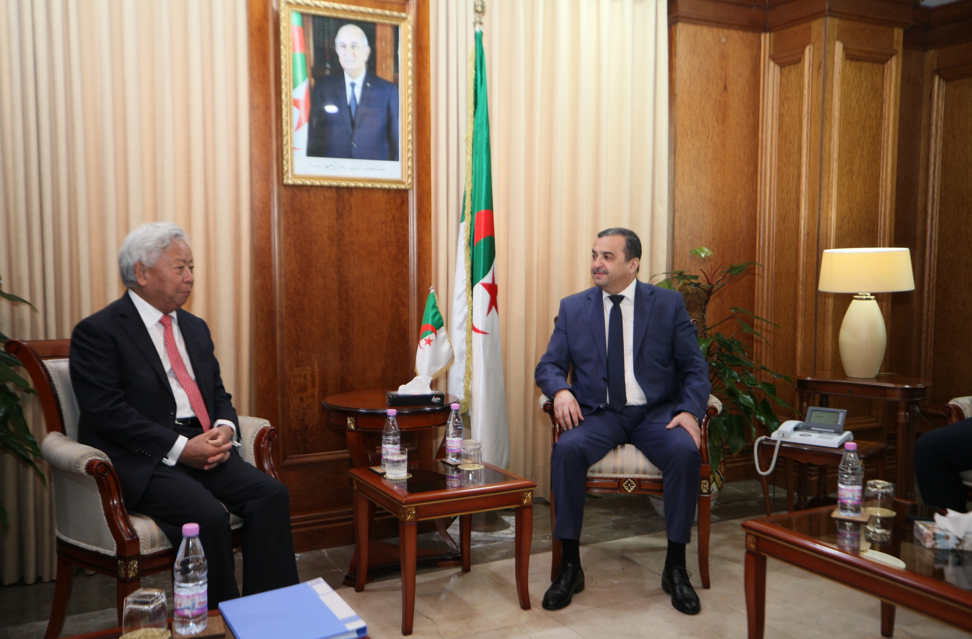Algeria moves away from oil revenue reliance
AIIB partnership signals structural financing shift as CL=F steadies and DZD=X stabilizes; Algeria targets lower spreads, higher execution ratios, and 15% non-hydrocarbon exports by 2028 through disciplined multilateral investment.

Algeria’s recent engagement with the Asian Infrastructure Investment Bank (AIIB) to co-finance hydrocarbons, mining and desalination projects delivers a pivotal signal: this is less fiscal window-dressing and more fiscal architecture change. In the calendar year 2024 Algeria’s nominal GDP stood at approximately US$268.9 billion, with real growth near 3.9 percent in the first half and full-year inflation falling to around 4.3 percent.
Foreign-exchange reserves equated to about 25.2 percent of GDP in September 2024, or roughly US$67 billion, providing comfortable import cover but limited expansion room. The budget deficit widened to about 13.9 percent of GDP in 2024, and government debt was estimated at 46.2 percent of GDP, rising toward 50 percent in 2025 under pressure from soaring social spending and weak hydrocarbon receipts.
The mechanism at play involves three linked channels. Firstly, financing through AIIB brings longer-tenor, lower-cost capital and stronger governance conditioning than Algeria’s traditional reliance on short-dated state borrowing or ad-hoc foreign deposits. Secondly, it allows Algeria to shift away from near-term consumption, subsidy-led fiscal stimulus toward investment in infrastructure assets—desalination plants, mine processing facilities, natural-gas conditioning units—that have extended lives and yield dollar-oriented cash flows. Thirdly, by leveraging multilateral participation and crowd-in private finance, Algeria may reduce its domestic banking intermediation stress (private credit stood at about 19-20 percent of GDP), thereby freeing the balance sheet for private growth sectors rather than state-dominated capex alone.
In macro-sector terms the initiative changes the risk profile. Hydrocarbons still generated about 80-90 percent of export earnings in recent years, and a $1 move in Brent crude (CL=F) typically changes state revenue by roughly 0.3 percentage points of GDP. The new investment paradigm aims to diversify away from that revenue elastic model by securing input from the AIIB into non-hydrocarbon sectors such as mining and water infrastructure. For example, Algeria’s renewable water resources per capita are under 500 m³ annually, making investment in desalination a structural priority. On the mining side, downstream capacity-adds in phosphates, iron ore and refining raise value-added exports and job multipliers beyond hydrocarbons.
Market implications follow logically. A successful AIIB-anchored financing programme tightens Algeria’s financing margins: if execution and disclosure standards meet expectations, sovereign spreads on Algerian 10-year dollar-denominated bonds could compress by 40-70 basis points relative to peer frontier-market issuers, and the exchange rate (DZD=X) pressures relieve as the central bank needs fewer ad-hoc FX interventions. Conversely, poor implementation or weak governance would widen spreads and increase rollover risk. Algeria’s gross reserves already cover 10–12 months of imports; fresh multilateral inflows reduce dependence on hydrocarbon windfalls and strengthen the central bank’s optionality in moving toward a more flexible exchange-rate regime.
The international dimension is significant. Algeria’s move aligns with global trends: major hydrocarbon exporters in 2025 are increasingly using multilateral banks to reduce risk and crowd-in private finance as commodity cycles soften. The AIIB’s footprint in Africa rose 22 percent in approval volumes in 2024, offering Algeria structural peer anchoring. Regionally, Morocco cut its fiscal deficit to 4.1 percent of GDP by 2025 through tax reforms, illustrating the alternative track of fiscal consolidation rather than capex-heavy stimulus.
Forward indicators are measurable and time-bound. Algeria should sign and begin disbursing at least US$8 billion of AIIB-linked investment by end-2026, achieve execution (disbursement/commitment) ratios in projects above 70 percent in 2027, and raise non-hydrocarbon export share from current ~10 percent to roughly 15 percent of total exports by end-2028.
Inflation should remain under 6 percent while reserves stay above US$60 billion through 2026, and government debt should stabilise or declinewards from its 50-percent-of-GDP level. If these metrics fall into line, Algeria’s pivot toward multi-source financing and diversification will represent a meaningful structural shift rather than a temporary adjustment.





